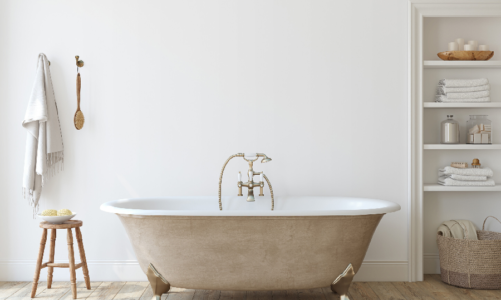An oven is a significant investment, and it’s essential to take the time to consider the different models and features before you buy. In many kitchens, a wall oven provides a modern look and several critical advantages over ranges.
Space Savings
As innovation drives kitchen appliance technology, ovens of all shapes and sizes have become more versatile. Some models can perform many cooking functions that you’d expect from a traditional standalone oven, including slow cooking, multi-cooking, and convection baking—depending on your model and kitchen layout, opting for a built-in oven installation Washington DC can save space by eliminating benchtop appliances like slow cookers and toaster ovens. It can also prevent the loss of valuable floor space by ensuring your oven sits flush with the wall or cabinets. Wall ovens are a more complicated addition to your home than standalone or rangehood-mounted options, and they require on-site customization to fit into existing cabinet cutouts. Before you shop for your new wall oven, carefully measure the cabinet opening and write down the measurements. This will help ensure your replacement fits without needing an expensive cabinet redesign. It will also help you avoid the risk of electrical or gas leaks, which could compromise your safety.
Enhanced Cooking Performance
A built-in oven adds a premium cooking appliance to your kitchen that enhances the functionality of your space. Ovens are designed to cook at higher temperatures than other smaller appliances such as microwaves, air fryers, and slow cookers. This means they can achieve far more when creating meals for the family, entertaining friends, or baking. If you have a new home or are renovating your kitchen, you can choose between a wall oven or a range oven. Choosing the right one for your needs is essential as each has unique benefits. Before beginning your new oven installation:
- Ensure the circuit breaker that supplies electricity to the cabinet cutout is turned off.
- Once this is done, locate the junction box connected to the electrical wiring and open the cover to expose it.
- Connect the wires from your house to your oven using a right-angle cable clamp, then connect and secure them together.
Convenience
While it may seem unnecessary, a double oven can make your kitchen more practical for families and busy cooks. No need to lug a heavy roaster across the room or worry about spilling hot foods on an open door or a high-traffic area. Adding an electric built-in oven to your home can be a simple, straightforward. However, the installation can require on-site modification, such as a cabinet cutout and reinforcement, or additional services like power point relocation or gas line hook-ups. These upgrades typically need to be arranged with a carpenter, stonemason, or electrician and are best done at the same time as the delivery and installation of your new appliance. This way, you can save on scheduling costs and avoid the headaches of trying to coordinate multiple tradespeople yourself.
Style
A new oven can transform the style of your kitchen. You can choose from various styles, sizes, and functions to suit your taste. A wall-mounted oven is a more minimalist design option. It’s also typically cheaper than a range with similar features. There are even plug-in electric ovens that don’t require hard-wiring. However, you may need to consult a professional electrician to make the necessary modifications for safety and performance. When choosing the type and size of your oven, consider your cooking needs and the kitchen’s layout constraints. Ensure you have enough space for an oven cabinet and locate it near a safe place to set hot food. It’s worth avoiding over-customizing your kitchen to avoid making it less appealing to future buyers. You should also avoid choosing expensive upgrades that will become obsolete in a few years.




